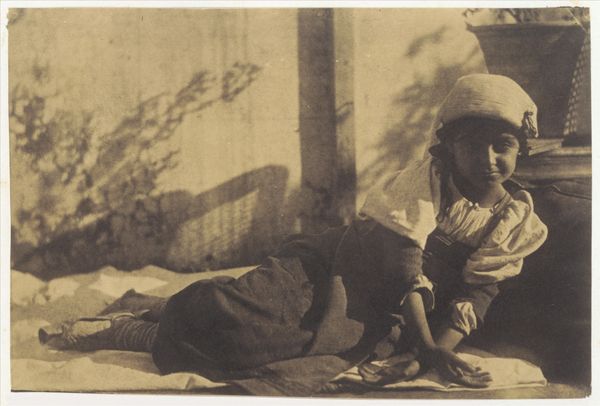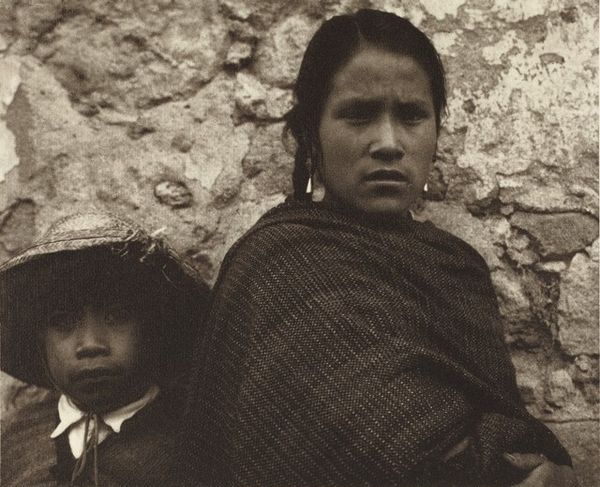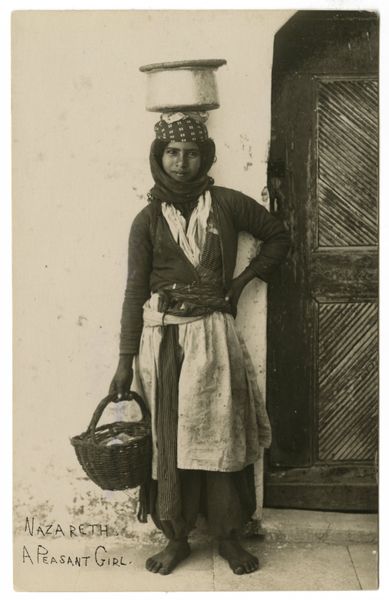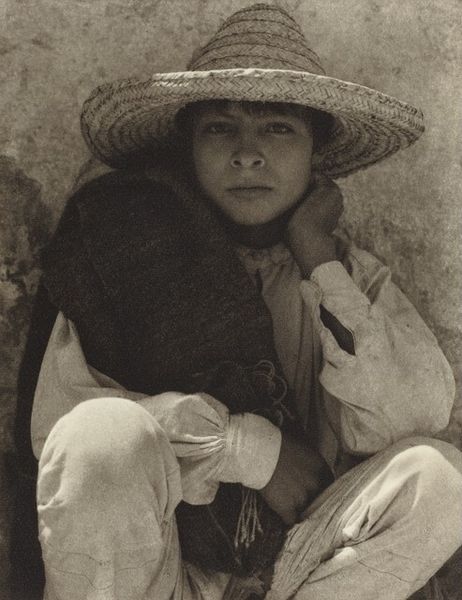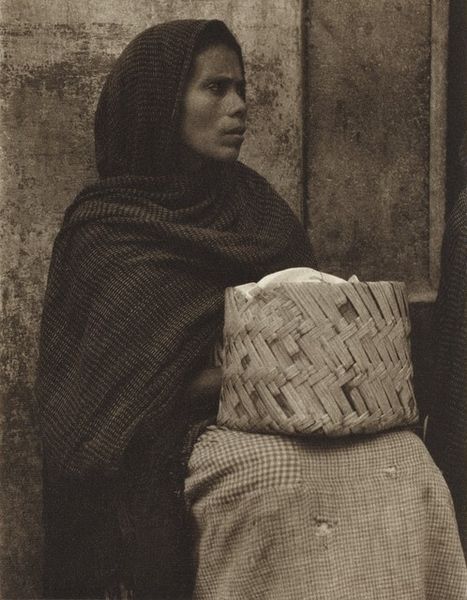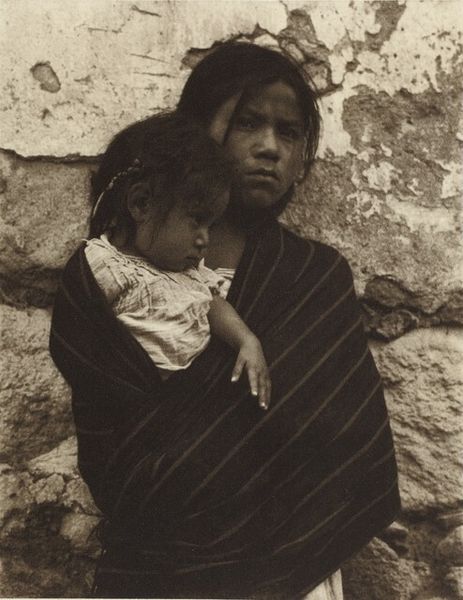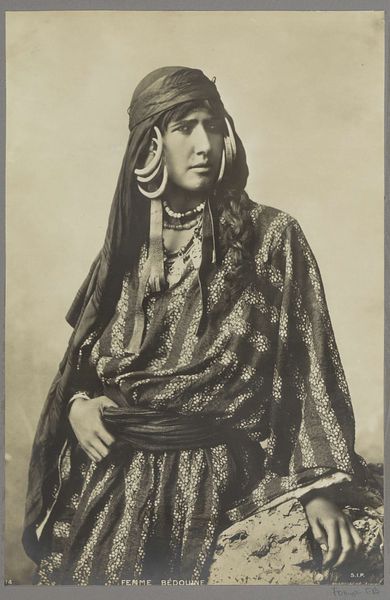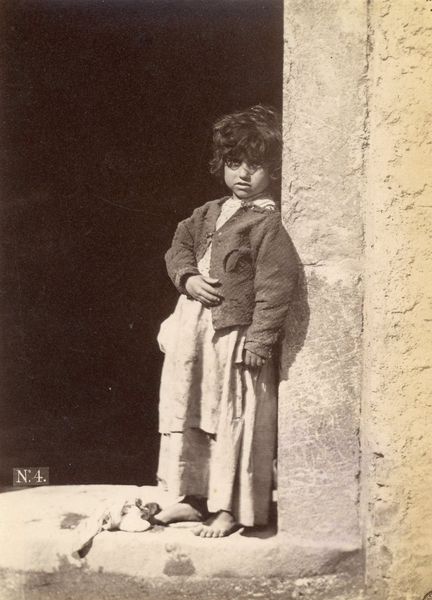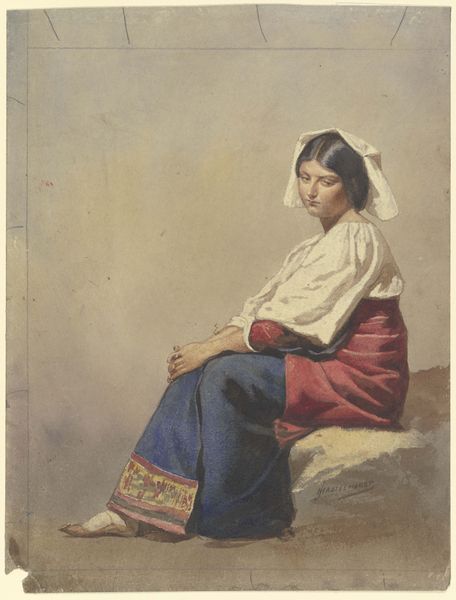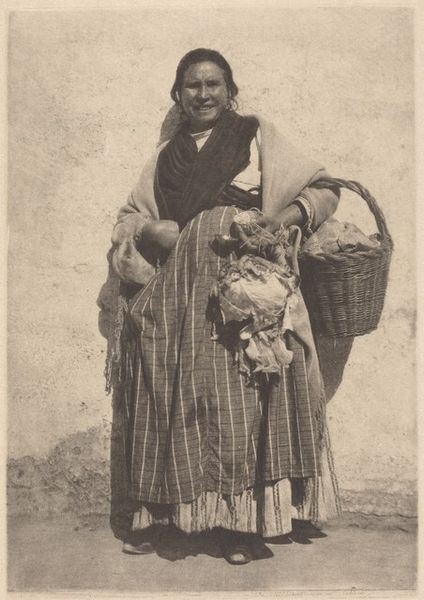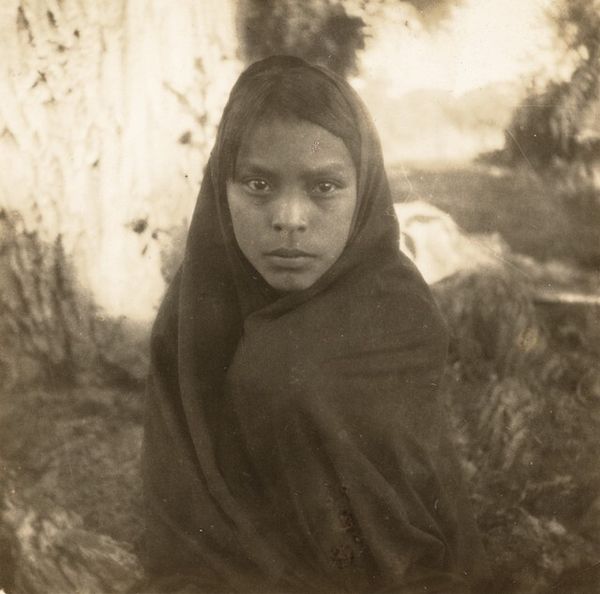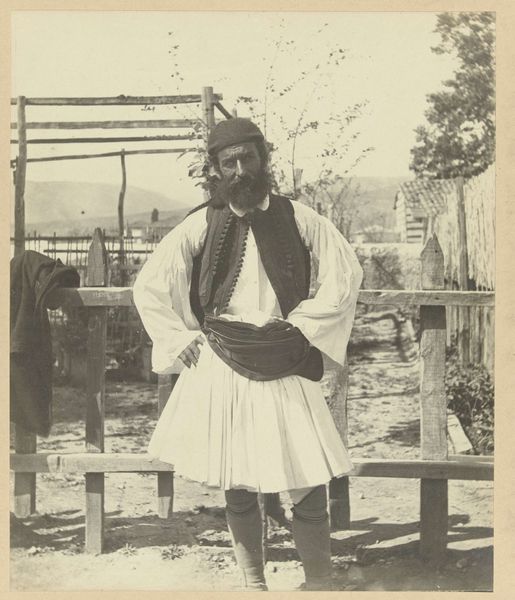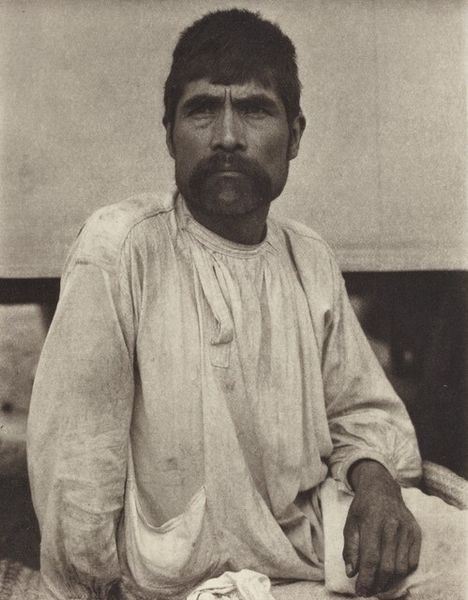
photography
#
portrait
#
portrait image
#
photography
#
historical photography
#
realism
Dimensions: image: 12.6 x 15.7 cm (4 15/16 x 6 3/16 in.) sheet: 40.3 x 31.4 cm (15 7/8 x 12 3/8 in.)
Copyright: National Gallery of Art: CC0 1.0
Curator: Paul Strand's photograph, "Woman and Baby, Hidalgo," likely taken between 1933 and 1967, presents a striking portrait steeped in cultural and historical significance. Editor: The sepia tones give it this feeling of timelessness, like a memory, and there's something incredibly grounding about it—almost severe, but beautiful in its directness. Curator: Precisely. Strand was deeply interested in depicting his subjects with dignity and respect, particularly in marginalized communities. We can delve into the representation of indigenous identity, considering Strand's socio-political viewpoint in relation to colonial gazes within photography. The woman’s direct gaze confronts the viewer. Editor: It really does! And that baby in the little straw hat – is totally stealing the show! There's such a sense of stoicism from the woman. The way she holds herself and contrasts the lightness, almost comical sweetness, of her child, nestled beside the rough-hewn texture of those bags next to her. There's a whole story brewing, a lived reality pressing in from all sides. Curator: Contextualizing this photograph within the post-revolutionary Mexican period sheds light on nationhood, modernization, and the indigenismo movement, especially how artists like Strand contributed to and sometimes complicated the narrative around national identity. Her clothing, the rebozo, the adobe wall; they act as social signifiers that speak volumes. Editor: It really does bring those academic-type concepts to life! But also, for me it goes straight to the heart. Like, imagine that woman is *my* grandmother...it's about family. About history. About carrying on no matter what. It reminds you what photographs should actually *do*—give you all the feels and make you think at the same time. Curator: And with that personal connection, it helps us reflect upon the ethical considerations within visual representation itself—to think critically about the gaze and question its effect on not just historical documentation, but on social consciousness. Editor: Yes. So, as we walk away from the photograph, maybe it’s us—the viewers—who should feel a bit more...observed, changed by our time spent here.
Comments
No comments
Be the first to comment and join the conversation on the ultimate creative platform.
